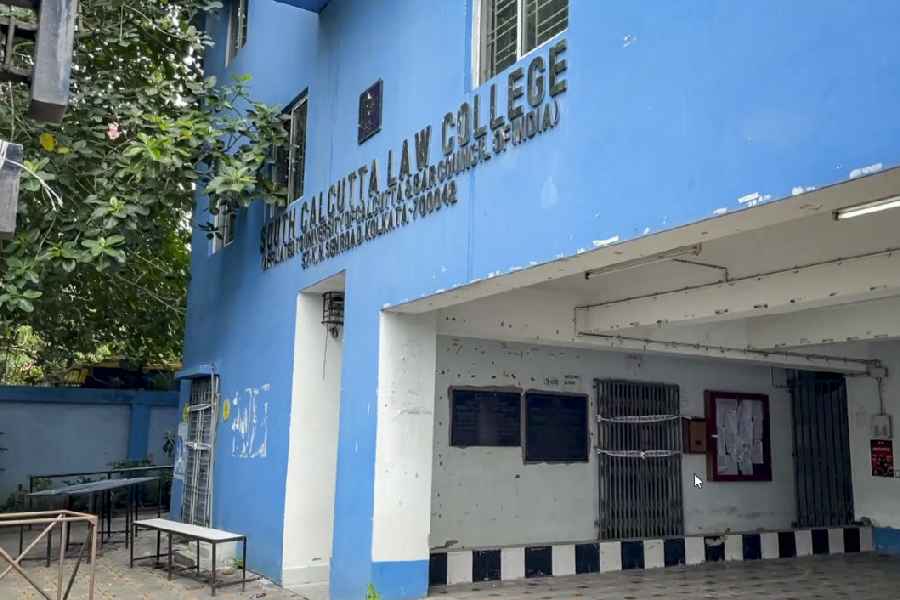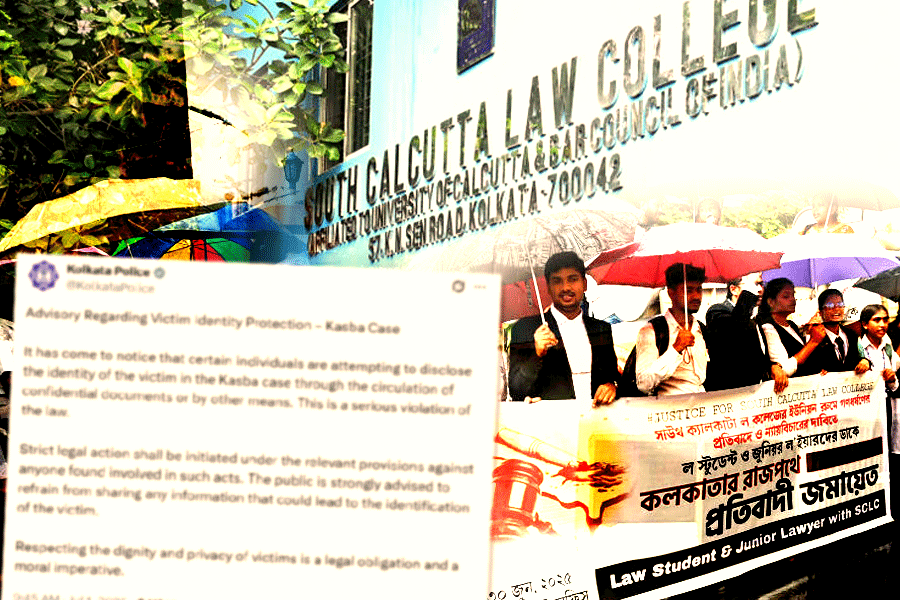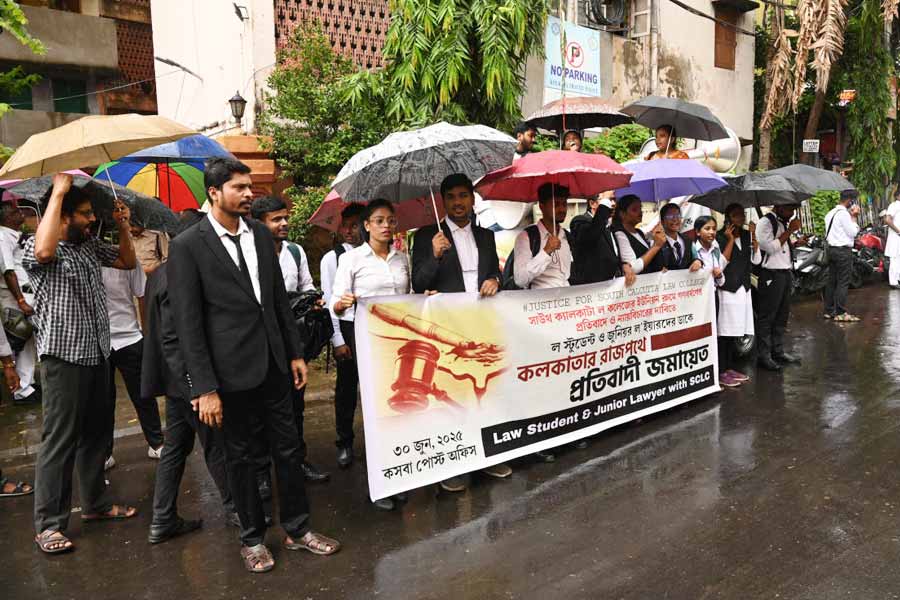 |
| Hans Dahlgren holds the replicas of the Nobel medal in New Delhi. (AFP) |
New Delhi, Dec. 9: The Swedish government?s kind gesture of replacing the stolen Nobel prize medal awarded to Rabindranath Tagore in 1913 has not come without a price tag.
India is believed to have paid about Rs 2 lakh for the gold and bronze clones.
The vice-chancellor of Visva-Bharati University, Sujit Basu, said: ?It is not very clear as to who will be paying for the medals. There is a mention of an amount of Rs 1,71,000. We don?t mind paying for it but we have not paid for it.?
Officials at the Swedish embassy did not divulge the cost involved in obtaining a replacement, but Visva-Bharati admitted that there was a price, dispelling the impression that the replicas were a gift.
The officials explained that ?the medals are never given free?.
The original medal was stolen along with some other invaluable documents from the Visva-Bharati campus in March this year. When investigations to recover the medal failed, the university requested the Swedish government to consider minting a replica. As a goodwill gesture, Stockholm agreed.
Basu explained that it is not the university alone that could pick up the tab. ?The central government could also pay for it. The Rabindranath Tagore Trust is also keen to pay for it.?
The replicas were presented by the Swedish secretary of state, Hans Dahlgren, to external affairs minister K. Natwar Singh on Wednesday, two days before the Nobel prizes for 2004 are to be awarded.
Dahlgren expressed the honour his government felt in returning to India a substitute for what had been stolen, earning in exchange Singh?s appreciation for Swedish ?thoughtfulness?.
?It goes on to show that there are great things that cannot be either stolen or diminished ? and these include the long-standing cultural ties between India and Sweden,? the minister had said while receiving the replicas.
Till 1980, the Nobel medals, each weighing around 200 gm and with a diameter of 66 mm, were made of 23 karat gold. Designed by Swedish sculptor and engraver Erik Lindberg, the medals have retained the original look since 1902. For minting a new medal just like the old one, India would have to pay for the lost gold.
On two previous occasions, Nobel medals ? of German Jewish awardees Max von Laue (1914) and James Franck (1925) ? had to be melted down to escape confiscation by the Nazis during the occupation of Copenhagen during World War II. Though the crudely melted gold was finally sent to the Royal Swedish Academy of Sciences, it was thought better to mint new medals than use the metal that had been preserved in a chemical substance.
What happens if the original is now found ? the investigation is now being conducted by the CBI? Visva-Bharati will end up with three medals but, sobered by the theft, will display only the bronze one. Burglars, please take note.











